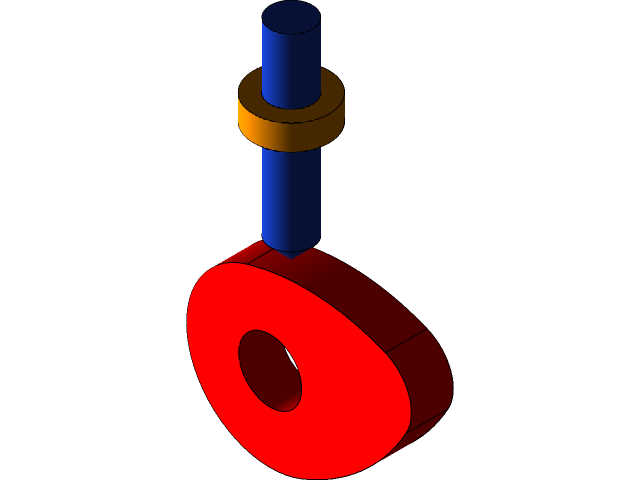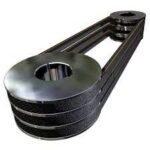Cam is always rotated by a prime mover. We will discuss the differential method for finding relation between the angular velocity of a cam and the linear velocity of a follower. And, from that relation we will calculate the velocity of follower as the angular velocity of cam will be known. The overall method is like below:
○ Find out an equation, which define the displacement of the follower. Now, according to the different types of motion the displacement equation will differ from case to case. Even there may be situation, where a part of the follower motion is of one type and rest of the motion is of another types. For example, a follower motion may be combination of simple harmonic motion and constant velocity motion. In such cases, you have to define the displacement accordingly.
○ Perform a partial differentiation of the displacement equation with respect to time (t). Here, the term angular velocity of the cam will be added and you will get the equation of the follower linear velocity in the terms of cam angular velocity and rotation angle.
○ Now simply use the velocity equation to get the linear velocity of the follower by putting the cam angular velocity and rotation angle.
Calculating Follower Velocity for Simple Harmonic Motion
The displacement of a simple harmonic motion follower is governed by the following equation:
s = r + a cosθ ………………Eqn.1
Where,
s = Displacement of follower at a cam rotation angle θ
r = True radius of the cam
a = the offset distance between the cam true centre and the centre about which the cam is rotating
θ= Cam rotation angle
Now, by differentiating the Eqn.1 with respect to the time (t), we will get the follower velocity equation as below:
v=ds/dt = – a * sinθ * dθ/dt = -a*sinθ*ω………Eqn.2
Where,
ω = Angular velocity of the cam
So, you can see from the Eqn.2 that you can calculate the linear velocity of the follower if you know the angular velocity of the cam and the angle of rotation.
Calculating CAM Velocity for Cycloidal Motion
The displacement of a simple harmonic motion follower is governed by the following equation:
s = h (β/θ) – (h/2Π) sin (2Π β/θ) …….Eqn.3
Where,
s = Displacement of follower at a cam rotation angle θ
β= Cam rotation angle at which the follower reaches the maximum height (lift).
θ= Cam rotation angle at which you want to calculate follower displacement
Now, by differentiating the Eqn.1 with respect to the time (t), we will get the follower velocity equation as below:
v=ds/dt = (ω h/θ)*{1 – cos (2Πβ/θ)}…..Eqn.4
ω = Angular velocity of the cam
Conclusion
The velocity of any cam follower can be calculated using the differential method provided you have the equation relating the angular displacement of the cam and the linear displacement of the follower. Also you need to have the rotational speed of the cam.


